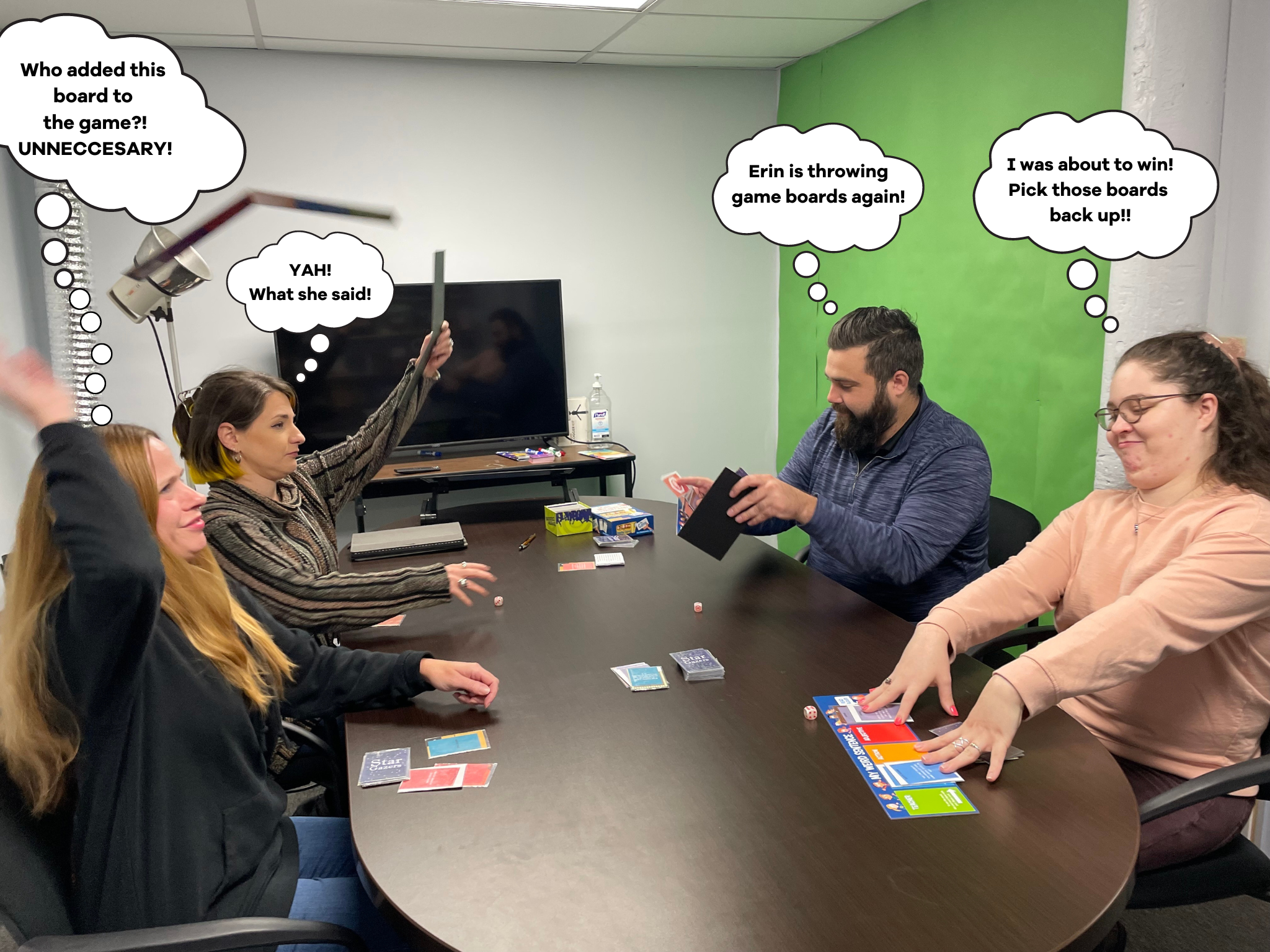September: Playtesting
Last month we ended this segment after our first playtest session. We didn’t hit a grand slam on the first pitch, but we did get a good read on the pitcher (this analogy doesn’t work unless you can imagine a cooperative baseball league. Unrelated, does anyone want a new game idea?).Â
The game we tested and liked the most has set collection, tableau building, and take that. Players collect the cards that represent the 7 steps to creating a game, build their tableau with these cards, and play “problems” on other players’ tableau. The first player to collect all 7 steps, and resolve any problems with a special “GPI can fix that” card, wins.Â
Thematically, this game is exactly what we are looking for, but it didn’t play the way we wanted it to yet. So we printed more cards, grabbed more components from other games on hand, and took it down to the brewery tasting room in our complex and continued to playtest. Over a few craft beers and more playtesting, the game still wasn’t playing like we wanted it to. The gameplay was too long, the rules didn’t feel intuitive, and it lacked an element of chance. Â
To resolve the issue of the game taking too long we decided to trim some of the game. This is never easy to do because it can feel like you’re kicking one of your kids to the curb! We originally had 7 steps for “making a game†but we cut that down to 5. (Don’t worry playtesting and consulting, we still believe in you and will include you in the expansion pack!)  Also, to make the game more intuitive, we added player boards to help players keep track of the steps they need to win. And finally, to add an element of chance, we added a die that could give a benefit to the active player.Â
The 5 steps worked much better and the player boards were very helpful, but players kept forgetting to roll the die on their turn. To solve this we created player aid cards, but playtesters were still more eager to play cards from their hand than to roll the die. We wanted to add the die because GPI has an epic love affair with dice, but it just didn’t seem to matter to the gameplay so we begrudgingly scratched it.
Writing up the specs to get a quote:
With the end cost in mind, we created official specifications for producing the game and ran our first quote.  Sadly, we were over our budget. We needed to trim even more from the game, but everything seemed essential.
After some brainstorming, we decided that we could remove the player boards if we added smart graphics to the cards that will remind players what they need to complete the set and win the game.Â
We now had the components down and we just needed to finalize the card and paper stocks we wanted as well as the special printing treatments for the box and cards. Â Because we want to show off our capabilities, we opted for premium card stock, deluxe treatment, and unique packaging.Â
Like playtesting, it’s good to keep your intended audience in mind when choosing the component materials. If we planned to sell this game at a big box store, we would have picked a more affordable card stock. If we planned to sell this game through hobby game stores, we might have chosen a more subtle material for the cover -everyone knows euro-gamers love flat-perspective covers with fish and coins, right? Â
October: Getting Artwork Started
Before we could send the component list to the Art Department, we had to come up with some content and a brief. Giving the artist as much direction as possible will reduce revisions and save time and money.
We have a list of the components we need, but some of the cards were placeholders that just read “problem,” “fix,” or “wild.” As a team, we sat down and went through the entire component list to add flavor text. Luckily we are experts at the theme of making a game, if we weren’t, we could have reached out to an expert for consulting (did we mention we offer consulting?)Â
At this point, we should be reviewing artwork, but our art department has a full schedule right now. Our options are to send this work to a subcontractor or delay the production. Delaying the production would typically mean delaying the release, but because this is a small project, we have the option of air freighting the game for a reasonable price. It’s not ideal, but to keep work moving forward with our customers’ projects, the GPI game has taken a back seat for now. Does anyone remember dodgeball as a kid, and waiting to be picked for a team – that’s us now, waiting …..


Recent Comments